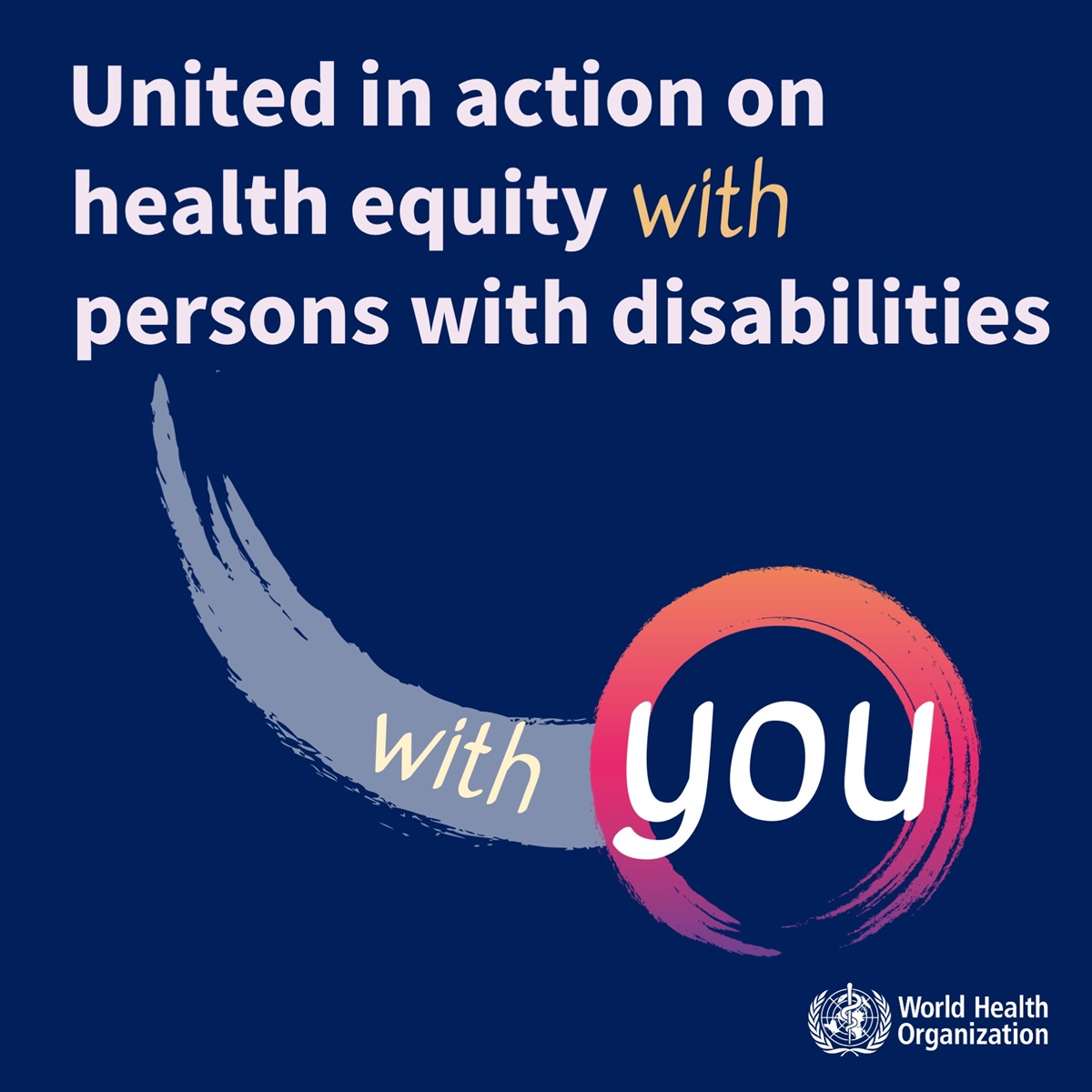3 December marks the International Day of Persons with Disabilities. On this day, WHO, together with partners around the world, calls for action to achieve the Sustainable Development Goals (SDGs) for, with and by people with disabilities.
Currently, more than 1.3 billion people live with severe disabilities, which represents 16% of the world population. Many with disabilities die earlier than the rest of the population, are at higher risk of developing various health conditions, and experience more limitations in their daily lives. We call these poor health outcomes “health inequalities” because they are largely avoidable and caused by inequitable factors within and outside the health sector. These factors include, for example, discrimination in our society, unfair policies, determinants of health, lack of access or quality of health care, and negative attitudes of health professionals. These health inequalities are a stark reminder that people with disabilities are too often left behind, and that achieving health and well-being for all (SDG3) requires their meaningful participation and empowerment.
Achieving the SDGs for, with and by people with disabilities is more within reach than ever before, as long as we unite. In 2019, UN Secretary-General António Guterres launched the Disability Inclusion Strategy (UNDIS) aimed at including people with disabilities in all operations and core functions across the UN system. UNDIS provides the tools to initiate bold systemic change, driving unprecedented progress for, with and by people with disabilities around the world. These achievements are a great demonstration of the value of systemic planning for disability inclusion, a reason to celebrate and a source of motivation to pursue these efforts. Find out more about WHO’s work on implementing UNDIS.

